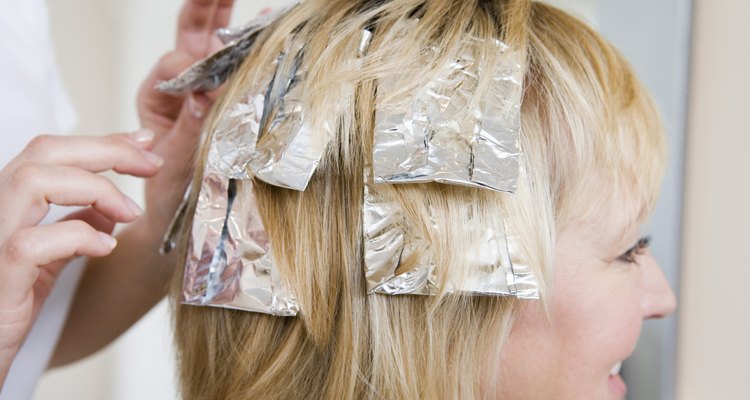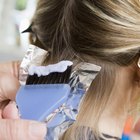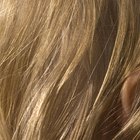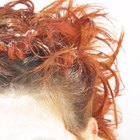
BananaStock/BananaStock/Getty Images
Color plays an important role in hair design, and the decision to add highlights is made daily by both men and women, whether in the salon or with home coloring kits. Whether seeking to lighten your natural shade or try out a brand new color, the right method of highlighting can provide changes from subtle to bold, creating a fresh new look that adds style and flair to your lifestyle.
Highlights 101

Donna Coleman/iStock/Getty Images
Hair highlighting refers to the process of partially lightening or coloring the hair, creating its effect by strategically applying color to individual sections. When using a lighter color, this area will appear to advance, while darker colors will seem to recede. When placed around the forehead, cheeks and temple areas, these special effects can frame the face to optimal advantage, enhancing or minimizing features to create a more striking appearance.
Take Your Pick

kzenon/iStock/Getty Images
The two chief methods of applying highlights are the foil technique and the cap technique. The foil technique involves weaving subsections of hair with a long tail comb and then selecting alternating strands from each subsection. These chosen strands are then placed over a square of foil and the selected shade of lightener or high-lift tint is applied, usually with a brush. In this way, highlights can be strategically placed with precision. The foil is then folded over the treated strands to prevent lightening unwoven hairs.
The cap method of applying highlights involves the use of a special perforated cap that is placed over the head. Strands of hair are pulled through the perforations with the use of a hook implement. The amount of hair chosen to be pulled through each hole will determine the amount of highlighting that is achieved. For a subtle look, fewer strands should be pulled through and surrounding holes may be overlooked. For a stronger, more dramatic effect, hair may be pulled through every opening and in greater thicknesses. Hair lightener is then applied to the pulled-through strands, usually with the use of a squeeze applicator.
Pros and Cons

moodboard/moodboard/Getty Images
Both methods of application are effective in creating attractive highlights. Advantages of using the foil method include less stress on the hair and no scalp discomfort, the ability to achieve highlights close to the scalp and hairline, and overall greater precision in the placement of each highlight. The disadvantages are cost, as it is a time-consuming procedure and hair salons generally charge top dollar, frequently offering a choice of partial or full highlights. Foil applications also require a higher degree of skill, producing poor results if not applied well.
The cap method is simpler for the home hair colorist, but it is more difficult to control the exact placement of highlights, particularly around the nape area. This method works well for short hair, but for curly hair or longer styles it can be difficult and even painful to pull long threads through the cap.
Your Crowning Glory

Desislava Dimitrova/Hemera/Getty Images
Whether choosing to cover gray, perk up your natural color or try a new look, highlights can add glamour, creating the illusion of texture by alternating dark tones with light. Psychologically, we associate lighter colors with youth, so adding light highlights to fuller looking hair can contribute to a younger, more vital appearance. Whether choosing the foil or cap method, highlights can accentuate your natural beauty, boost confidence and add to your happy, healthy lifestyle.
Related Articles

Difference Between Hair Glaze & Hair ...

Highlights Vs. Lowlights

How to Blend Hair Extensions With Two ...

How Are Highlights Done in a Salon?

How to Make Chunky Highlights From a Cap

What Is the Difference Between Hair ...

How to Highlight Very Short Hair

How to Highlight the Crown of Your Hair

How to Highlight Hair Using a Cap

How to Turn Orange Highlights to Dark ...

How to Do Platinum Highlights at Home ...

How to Use Goldwell Highlift 12-Series

How to Partially Dye Hair

How to Avoid Leopard Spots From Hair ...

How to Dye Only the Bangs of My Hair

Difference Between Permanent Hair Color ...

How to Color Block Hair With Foiling

Directions for Loreal Frost & Design

How to Put Red Highlights Into Dark Hair

How to Dye Your Hair Dark With Blond ...
References
Writer Bio
Pamela VanderWerf is a writer and editor with experience in public relations, advertising, marketing and journalism. She graduated from Indiana-Purdue University and resides in Los Angeles, where she writes on design, health, consumer issues, fashion, lifestyle and real estate, among other topics.
Photo Credits
BananaStock/BananaStock/Getty Images